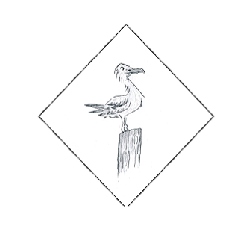DISCLAIMER: These opinions and views are those of the individuals concerned and not those of the University of Southampton.


OFFSHORE SURVEY:
Discussion and Conclusions:
Stations 19-
The “step” structure of the thermocline at station 22/23 could be due to several factors. Since this site was the furthest inshore of the stations, tidal influences will be greatest here. Wind driven mixing at the surface mixes the water column top down, while a tidal front would mix bottom up (Simpson, 1981). In the ADCP data taken simultaneously with the CTD cast displays increased velocity just below the surface mixed layer which may also be due to internal wave action. Time averaging the ADCP data over the duration of the CTD cast shows the velocity change with depth, however there is much more variance in the original image. The combination of these two observations may indicate the presence of internal wave action, along with small scale turbulence due to breaking of the internal wave (Emery, 1984). It is important to note that these two features are not mutually exclusive.
Chlorophyll and oxygen analysis at each station confirm the inferred biological activity from fluorescence measurements. Chlorophyll maximums are expected in the thermocline below the surface mixed layer where nutrients and light are both available. The chlorophyll maximums drive nutrient depletion as different phytoplankton and zooplankton consume the nutrients. The stepped structure of the thermocline at Station 22 appears to have resulted in deepening of the chlorophyll maximum. The same factors that are driving the water column structure are likely responsible for redistribution of nutrients, resulting in the deeper chlorophyll maximum. Mixing of phytoplankton and zooplankton between the depths of 20 and 35 meters is the likely cause of nutrient continuous depletion through that region of the water column. Ultimately, physical changes in the water column directly affect the observed distribution of biological and chemical factors offshore.
Zooplankton
The highest abundance per m-
Phytoplankton
The largest phytoplankton abundance that occurred coincided with the highest zooplankton suggesting a zooplankton bloom was in the process of occurring at station 19 and this was also a similar for site 21 which was the second furthest offshore. The lowest levels of phytoplankton coincided with increasing depth and reduced fluorescence and also correlated to the step thermocline seen on the CTD.


| Results and Discussion |
| Results |
| Discussion and Conclusion |
| Results |
| Discussion and Conclusion |
| Results |
| Discussion and Conclusion |
| Methodology Continued .. |